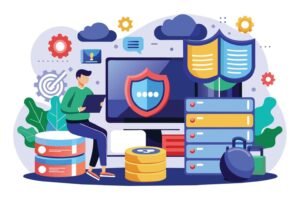Any digital product or website must go through a critical step of development called usability testing. It enables developers to get insightful input from actual users, spot possible problems, and make defensible adjustments to improve user experience. Using the appropriate strategies and methodologies is crucial when conducting usability testing. This post will go over five key usability testing tricks that can help you get insightful information and improve the user experience of your digital goods.
- Define Clear Objectives:
Before starting usability testing, defining clear objectives and goals is essential. Determine what aspects of the product you want to assess and what specific tasks or scenarios users should perform during the testing. Having clear objectives ensures that the testing process remains focused and allows you to gather targeted feedback on the areas that matter most.
For example, you might want to assess the ease of navigation, clarity of instructions, or effectiveness of calls to action. Defining these objectives will help guide the usability testing process and provide actionable insights for improvements.
- Recruit Representative Users:
The success of usability testing heavily relies on recruiting the right participants who represent the actual user base. Ensure that the chosen participants match the target audience’s demographics, preferences, and level of familiarity with the product or website. This helps in simulating real-world usage scenarios and ensures that the feedback received accurately reflects the experiences of actual users.
Recruitment methods may include using customer databases, reaching out to potential users through social media, or partnering with user testing platforms that can provide a diverse pool of participants.
- Plan Realistic Test Scenarios:
Design test scenarios that replicate real-life situations that users are likely to encounter while using the product or website. These scenarios should be relatable and relevant to the users’ needs. Realistic test scenarios make participants feel comfortable during the testing and encourage them to provide honest and meaningful feedback.
For instance, if you are testing an e-commerce website, scenarios can involve finding a specific product, adding it to the cart, and completing the checkout process. By incorporating such tasks, you can evaluate the website’s usability from the users’ perspective.
- Utilize Both Remote and In-Person Testing:
Consider using a combination of remote and in-person testing methods to maximize the reach and diversity of feedback. Remote testing allows you to test with participants from different locations, making it convenient for them to participate without the need for physical presence. It also allows you to reach a larger audience and collect data more efficiently.
- Encourage Open and Unbiased Feedback:
Create a welcoming and uncritical environment during usability testing so that participants feel comfortable sharing their opinions. Make it clear that the testing’s goal is to find room for improvement rather than to gauge how well the participants performed. This strategy will encourage open communication and honest input from participants, producing more precise and valuable findings.
Additionally, use open-ended questions and avoid leading questions that might influence participants’ responses. This will ensure unbiased feedback and a better understanding of users’ preferences and pain points.
Conclusion
Usability testing is a powerful tool for improving the user experience of digital products and websites. By defining clear objectives, recruiting representative users, planning realistic test scenarios, utilizing both remote and in-person testing, and encouraging unbiased feedback, you can conduct successful usability test and gather valuable insights. These five essential hacks will help you optimize your digital products, enhance user satisfaction, and ultimately drive business success through an improved user experience.




Add Comment